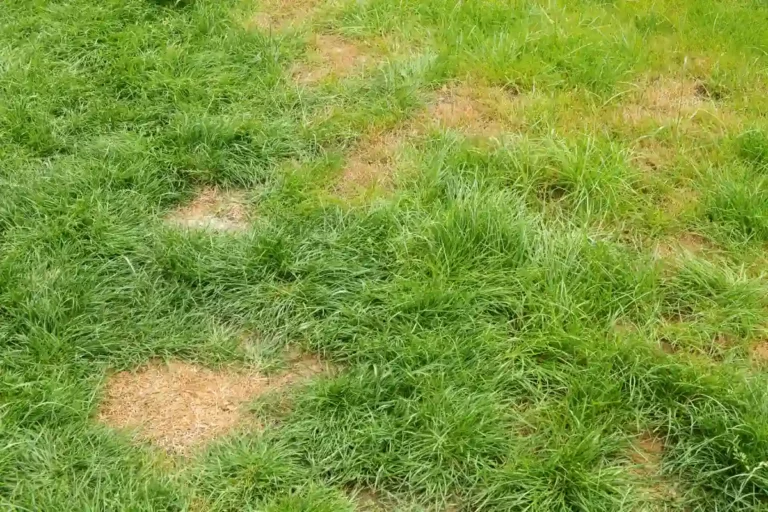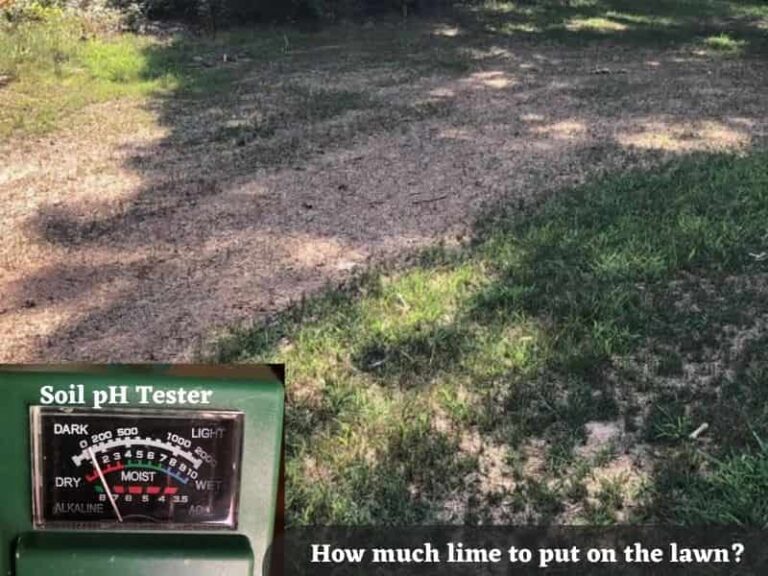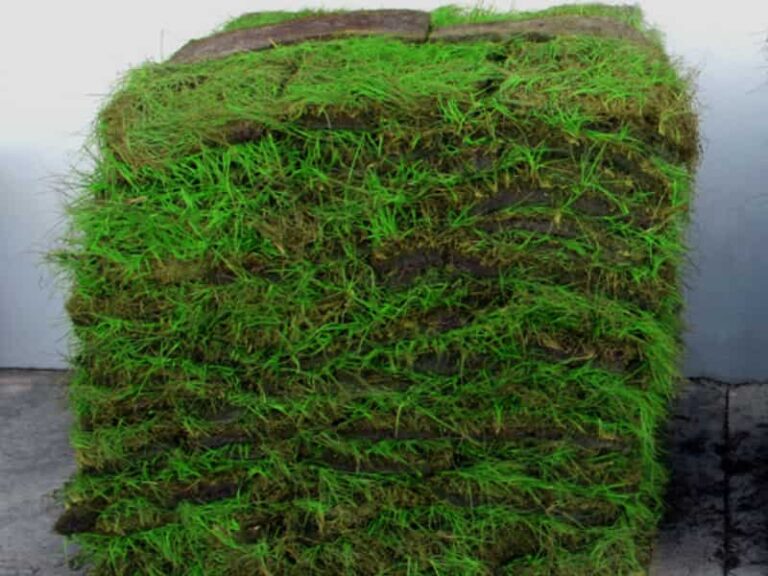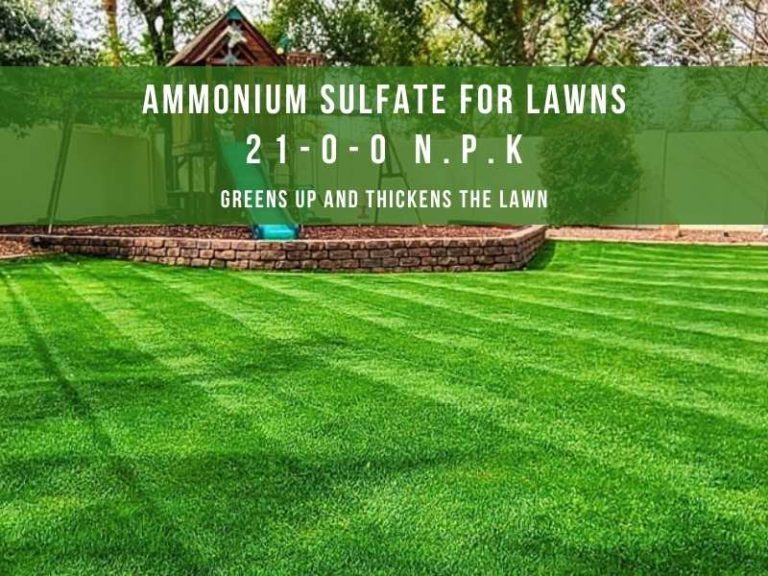Should You Overseed Before Or After Top Dressing Your Lawn
If you are starting a new lawn or have thin and bare areas on your existing lawn, overseeding and topdressing are critical. But should you overseed before or after top-dressing your lawn? Most professional landscapers agree on certain rules of overseeding and top-dressing lawns.
The rule of thumb is to overseed after top-dressing your lawn. Spread the topdressing material uniformly at a depth of ⅛ or ½ inches for a better germination rate. Then, overseed with 25-30g of grass seed per square meter at a depth of 0.25 inches.
Top-dressing before overseeding provides several benefits that will make your lawn dark green and healthy. If you have problems with overseeding and top-dressing your lawn, I will show you how to achieve the best results.
Table of Contents
Do I Need to Top-dress When Overseeding?
Yes, you should top dress when overseeding. It helps to attain the dark green color of healthy lawns. Otherwise, your lawn will become dull and yellowish, indicating a thirsty lawn. Such lawns are not resistant to droughts, pests, and diseases and may deny your property its curb appeal.
Topdressing then overseeding is also key to controlling thatches, reducing lawn stresses, and encouraging a dense lawn. The top dressing forms a natural fertilizer on your lawn, enhancing nutrient retention.
You should topdress when overseeding to keep seeds in contact with moist soil so they can germinate readily. It is also essential to test the Cation Exchange Capacity (CEC) of the soil before top dressing to judge the fertility of your lawn. Soil tests will cost you about $7 and $10 per sample at the local cooperative extension office.
Should I Overseed Before or After Top Dressing?
You need to overseed your lawn after top dressing for several reasons. Most importantly, you may bury the seeds too deep if you overseed before the top dressing. Secondly, it allows the grass seeds to get into contact with moist soil.
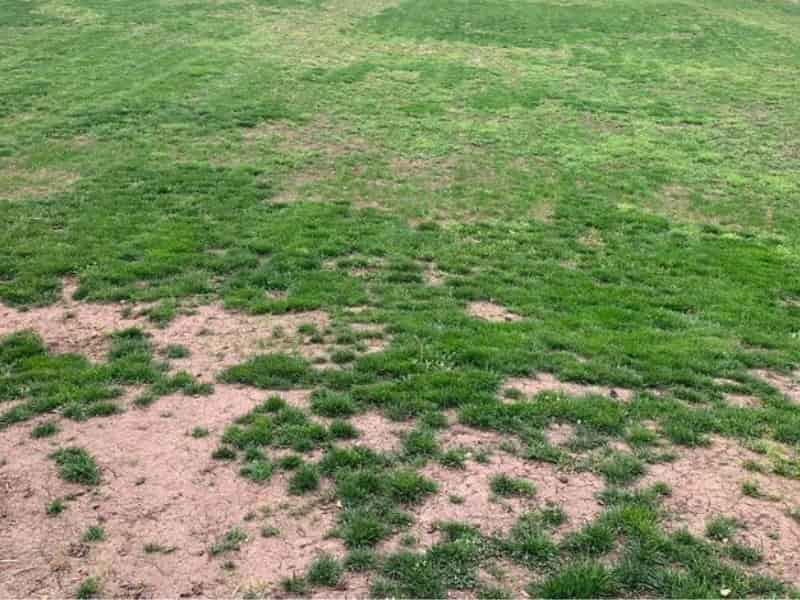
Overseeding after topdressing is essential for achieving a new look for your lawn. However, putting down the grass seed without top dressing with compost, sand, or fertilizer can result in thinning. But should you overseed before or after top-dressing your lawn?
Top dress your lawn first, then overseed. According to Turfsystems lawn care and irrigation, topdressing your lawn before overseeding has the following benefits;
- It helps to maximize the health of the soil in your lawn. Healthy soil with enough nutrients will enhance the growth of healthy grass.
- It adds important nutrients to the soil base to improve soil fertility.
- It’s also the best way to renovate a bumpy or distressed lawn.
The most appropriate season to overseed your lawn after topdressing is in the late summer or early fall. Many people prefer to overseed during the fall. However, overseed when the soil temperature is below 40 degrees Fahrenheit for grass to grow.
How to Top Dress and Overseed Your Lawn
Topdressing and overseeding your lawn is one way of keeping a lawn’s grass thicker and healthier. A well-maintained lawn has a lot of benefits to homeowners.
- A lush lawn increases the home’s exterior aesthetic appeal.
- Well-maintained grass soaks up carbon dioxide and provides clean air around your home.
- A thick well-maintained lawn control water runoff from the rain.
- Large grass-covered areas cool the immediate surrounding and may even reduce energy costs inside the house.
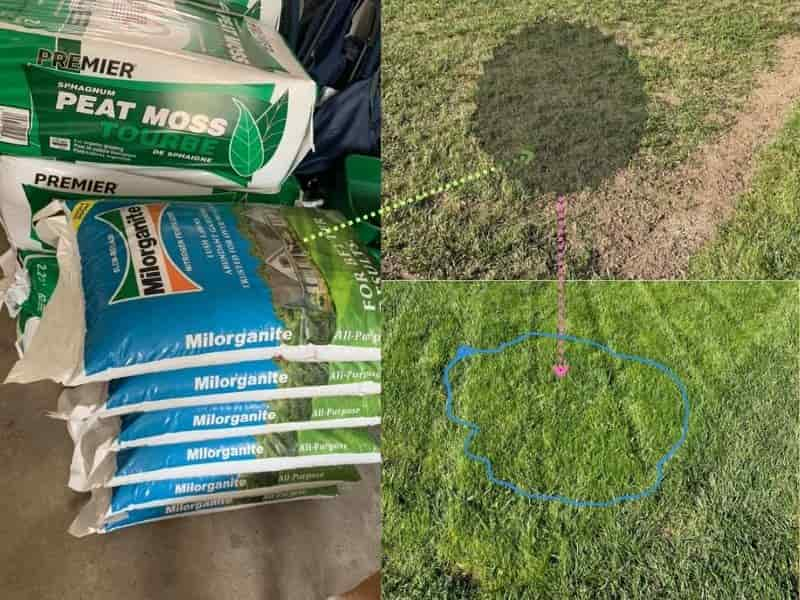
Here is a step-by-step guide on top dressing and overseeding your lawn.
How to Top-dress Your Lawn
By topdressing, you add compost or sand on the surface of an existing lawn to improve soil structure and add nutrients to the soil. Topdressing can also be done on your lawn to decompose or remove thatch, level bumpy areas and improve soil conditions.
Follow these steps to topdress and overseed the lawn;
1. Determine the top dresser to use
Select a material compatible with your lawn’s soil texture and composition. The most used top dresses are sand, compost, and topsoil, similar to your existing soil.
- Topdressing with Compost is highly recommended because it’s rich in organic nutrients and microorganisms that the soil needs.
- Sand is suitable for top-dressing golf fields. A golf field is built using sandy soil and specific turfgrass that survives through sandy conditions. Grasses like Kentucky bluegrass or perennial rye can thrive in harsh conditions.
- Using sand fixes unleveled grounds controls thatch and improves soil drainage.
- Similar soil to the existing soil helps smoothen out the soil on your lawn. The shortcoming of a similar soil is that it doesn’t contain much organic material like compost or fertilizers.
Fertilizers are rich in phosphorus which helps in root growth and provides nutrients to the grass. Ensure you water and fertilize your grass to get the best results. Before you choose a fertilizer for topdressing, check the weather forecast of the day you plan to overseed. Heavy rains are not good because they can wash out the fertilizers from your lawn if your drainage is poor. Avoid hot weather conditions and droughts while using fertilizers; this will burn your lawn.
2. Determine the amount of top dresser needed
Compost should have a uniform depth of ⅛ (0.125) or 0.5 inches throughout your lawn. That means you will require anywhere between 1.75 and 7 bags of compost per 100 square feet of lawn.
For bumps or unleveled areas, you will need to increase the volume of the material to cover the unleveled ground for the surface to be leveled.
3. Rake out thatch
Remove thatch and moss from your lawn to eliminate barriers and allow penetration of the topdressing material.
A little thatch should be spread on the lawn even when raking versus or dethatching. They are broken by microbes in the soil and decomposed into beneficial organic material.
4. Mow the lawn
Mowing the grass on the lawn will enable topdressing material to penetrate the grass easily.
5. Move the topdressing material to the field
Use a wheelbarrow to carry the compost or sand to the lawn when dealing with a small portion of the lawn. Use a spade to strategically place heaps of the topdressing material on the lawn to spread easily.
6. Topdress evenly
Using a garden fork or leaf rake, spread the material evenly depending on the desired depth. Either ⅛, ¼, ½, or 1 inch. Ensure the soil covers the lawn evenly.
Add more material until it is levelled evenly unless you are working on unleveled surfaces.
Here is a video on how to topdress your lawn
How to Overseed Your Lawn
The next step after topdressing your lawn is overseeding. The goal here is to correct grass thinning and areas where the grass was affected. Overseeding your lawn during late summer or early fall gives you better results.
Follow these steps when overseeding your lawn.
1. Select quality grass seed product
Select the grass seed based on your regional climate. There are different seed qualities for different climate conditions. Make sure you choose the correct grass seed that suits your climate region.
If you are from hotter regions, Bermuda grass, Centipede grass, and Buffalo grass will perform well on your lawn. If you are in cooler areas, overseed with Kentucky Bluegrass, Improved Tall Fescue, or Perennial Ryegrass.
High-quality, healthy seeds will yield healthy and thick lawns
2. Spread your seeds.
Although it’s not recommended, you can spread the seeds by hand to the target places for an existing lawn that only needs repair. Hand-broadcast the seeds when the weather is calm with minimal wind.
However, you can buy or rent a lawn spreader to broadcast the seeds. Work with small portions for effective overseeding of the lawn. At times you may decide to reseed lawns with weeds.
3. Fertilize the seeds.
Fertilize your seeds using Pennington ultragreen starter fertilizer. This fertilizer will encourage germination and strong root formation by supplying Nitrogen, Phosphorous, and Potassium throughout your lawn.
4. Water your lawn
When there is no rain, water your lawn to keep the seeds moist and encourage germination: water twice a day, early morning and late evening.
Here is a step-by-step video guide on overseeding lawn:
How Much Compost Do I Need for Overseeding
The general rule of thumb is ¼ to ½ inch thick. Spreading this amount of compost protects the new grass seeds without interfering with the existing grass.
One cubic yard of compost is enough to cover 1000 square feet of the lawn. You will need to increase the amount of compost when you’re laying compost on bumpy lawn surfaces.
With topsoil, use ⅛ to ¼ inches thick of the soil. You need 0.4 to 0.8 cubic yards of topsoil for every 1000 square feet of lawn.
Best Top Dressing When Overseeding Your Lawn
The best topdressing material when overseeding your lawn is high-quality compost. Fully decomposed compost is dark in color and smells nice. The microbes present in compost are the critical components for aerating and fertilizing the lawn.
Microorganisms operate under neutral to acidic conditions in compost. A pH of 5.5 to 8 is favorable to microorganisms. A pH of less than five will encourage fungi. Fungi will feed on the beneficial bacteria and destroy the compost.
Avoid using compost on your lawn if it smells rotten. You can aerate your lawn, irrigate, and topdress using other alternatives such as fertilizer or topsoil.
Final Thoughts
Overseeding is a vital part of proper lawn care. While it takes time, money, and some elbow grease, you are guaranteed a healthy, eye-catching lawn if you use proper procedures and dependable tools.

